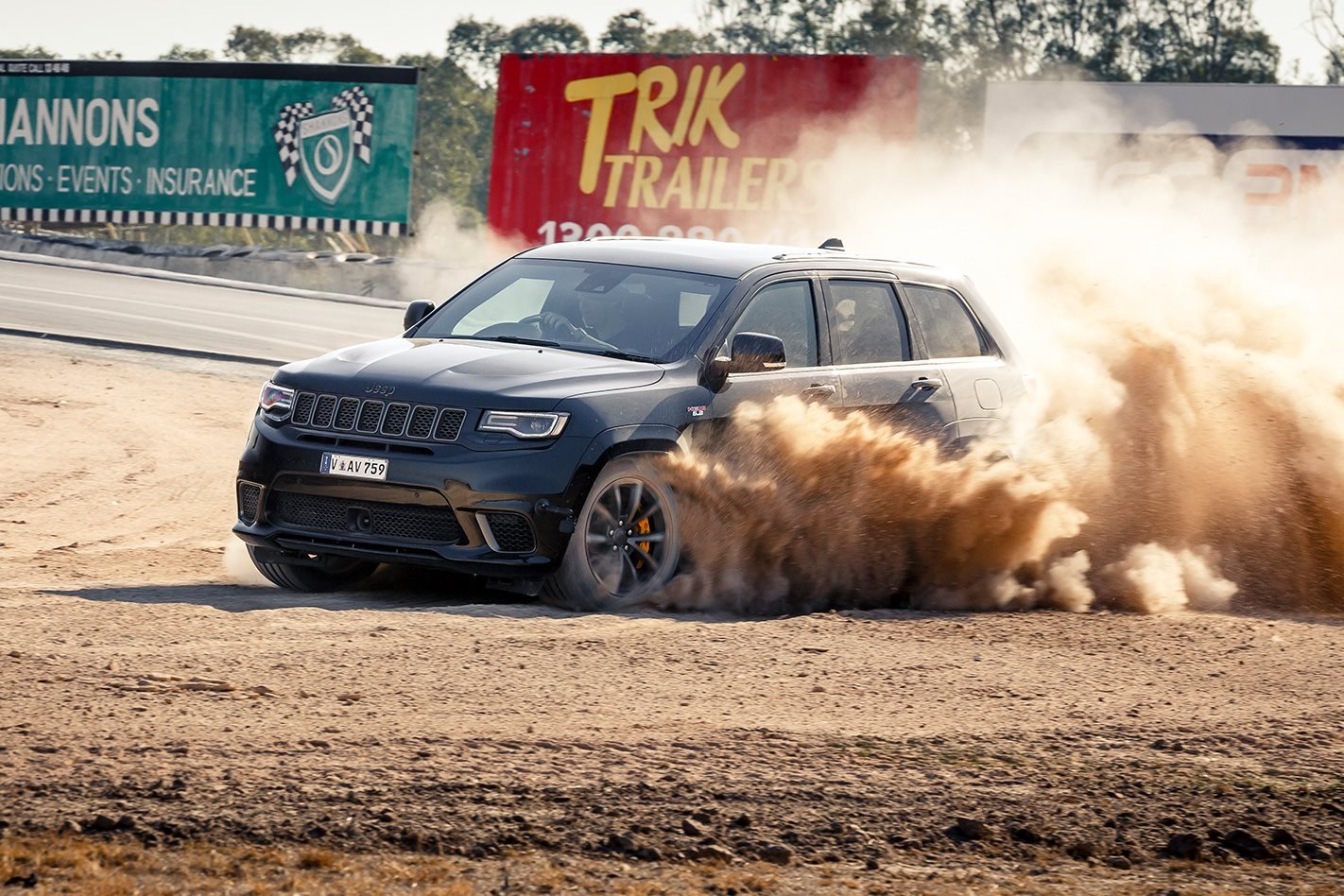MARTY DiBergi, the ‘filmmaker’ following rock band Spinal Tap in the 1984 mockumentary, never quite grasped the concept of an amp that went up to eleven: “Why don’t you make ten a little louder; make that the top number?” he asked lead guitarist Nigel Tufnel.
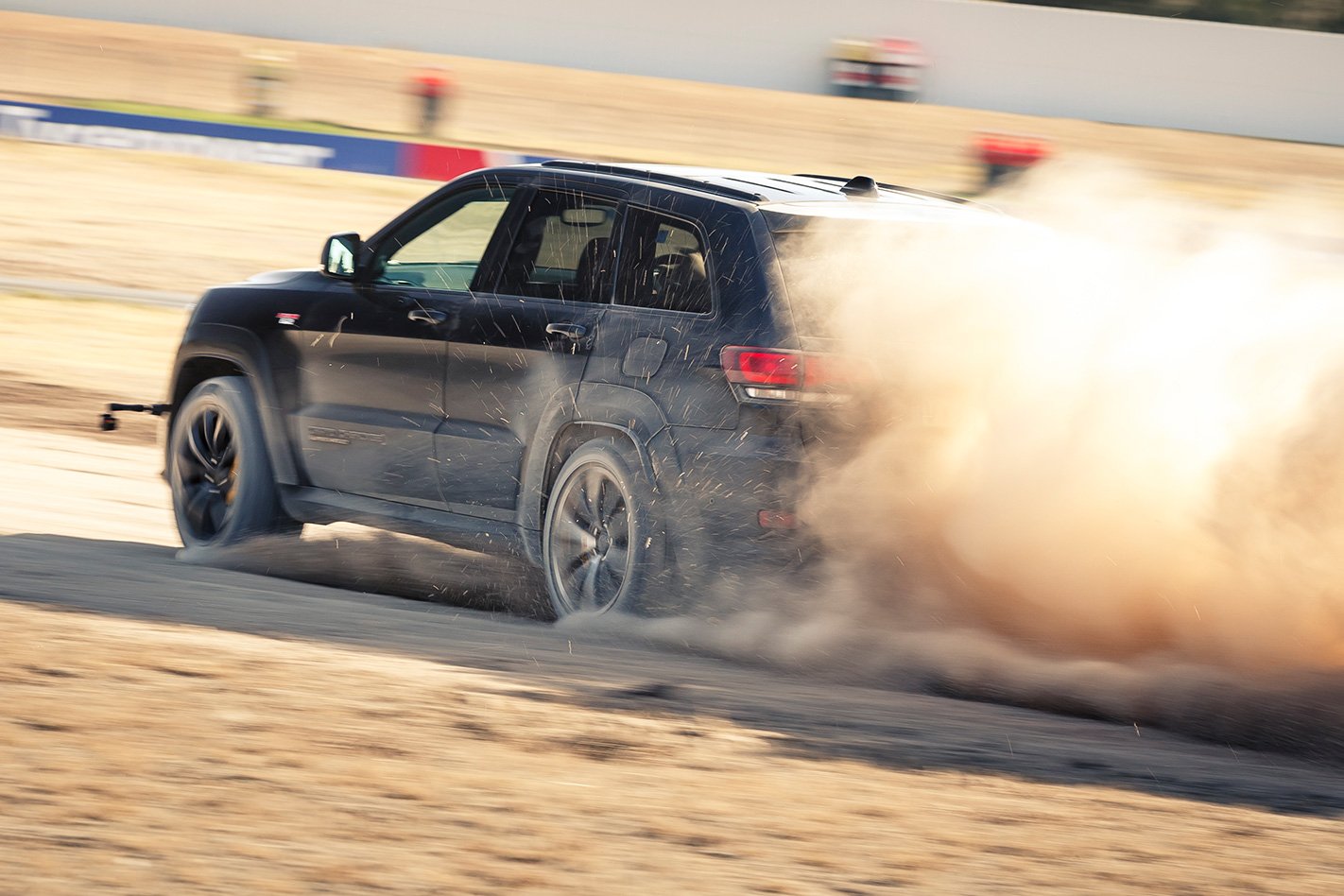
Nigel just paused: “These go to eleven.”
The brilliantly absurd This is Spinal Tap might have introduced us to the concept of things ‘going to eleven’, but even decibel-loving axeman Nigel would run out of superlatives today. Why? Because we’re on a rallycross track at Winton with a Jeep Grand Cherokee Trackhawk that goes to 522. That’s how many kilowatts the supercharged 6.2-litre Hemi V8 develops. More numbers? How about torque of 868Nm, 0-100km/h in 3.7 seconds and 400m in 11.6 seconds at 186km/h? Eleven? Kids’ stuff.
Whether any of this excess is a good idea is another consideration entirely. We felt duty bound to discover if manhandling a 2427kg SUV around a race track was type-two sort of fun at best. There’s also an ethical consideration in choosing a vehicle of such spectacularly conspicuous consumption. But before we delve into any of that worthy stuff, something by way of a spoiler.
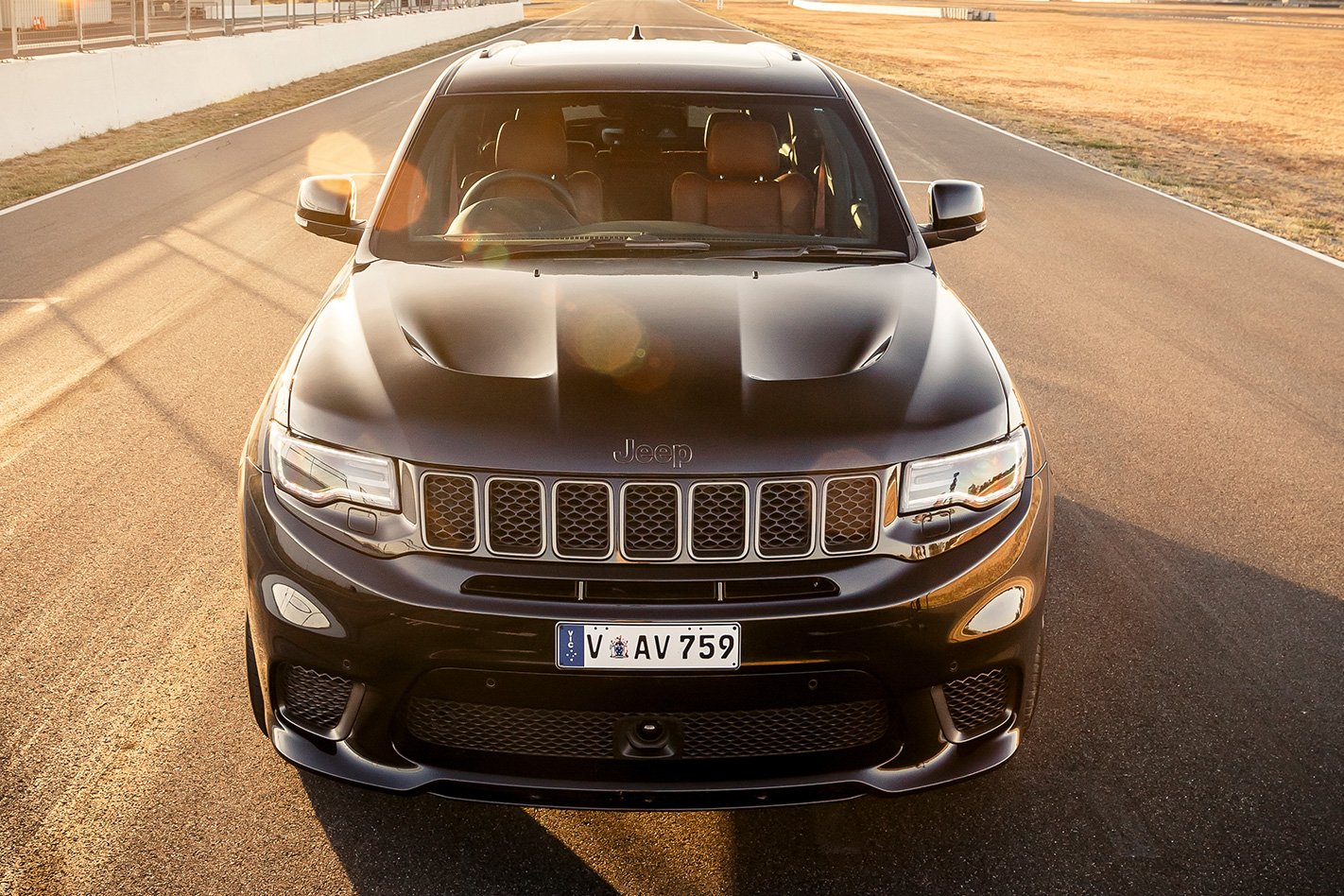
Weight might well be the enemy of ability on track, but if you can drive the Trackhawk hard without laughing like a loon then you’ve got a lump of coal where your heart should be.
On first acquaintance, the Trackhawk is a fairly easy thing to dislike. It’s brash, overblown and, without a membership to a free-weights gym and some sort of bull mastiff in the back, I initially felt a slight testosterone deficit behind the wheel. There lurks the queasy suspicion that this is an SUV targeted at types who value bragging rights and brute force over anything to do with dynamics.
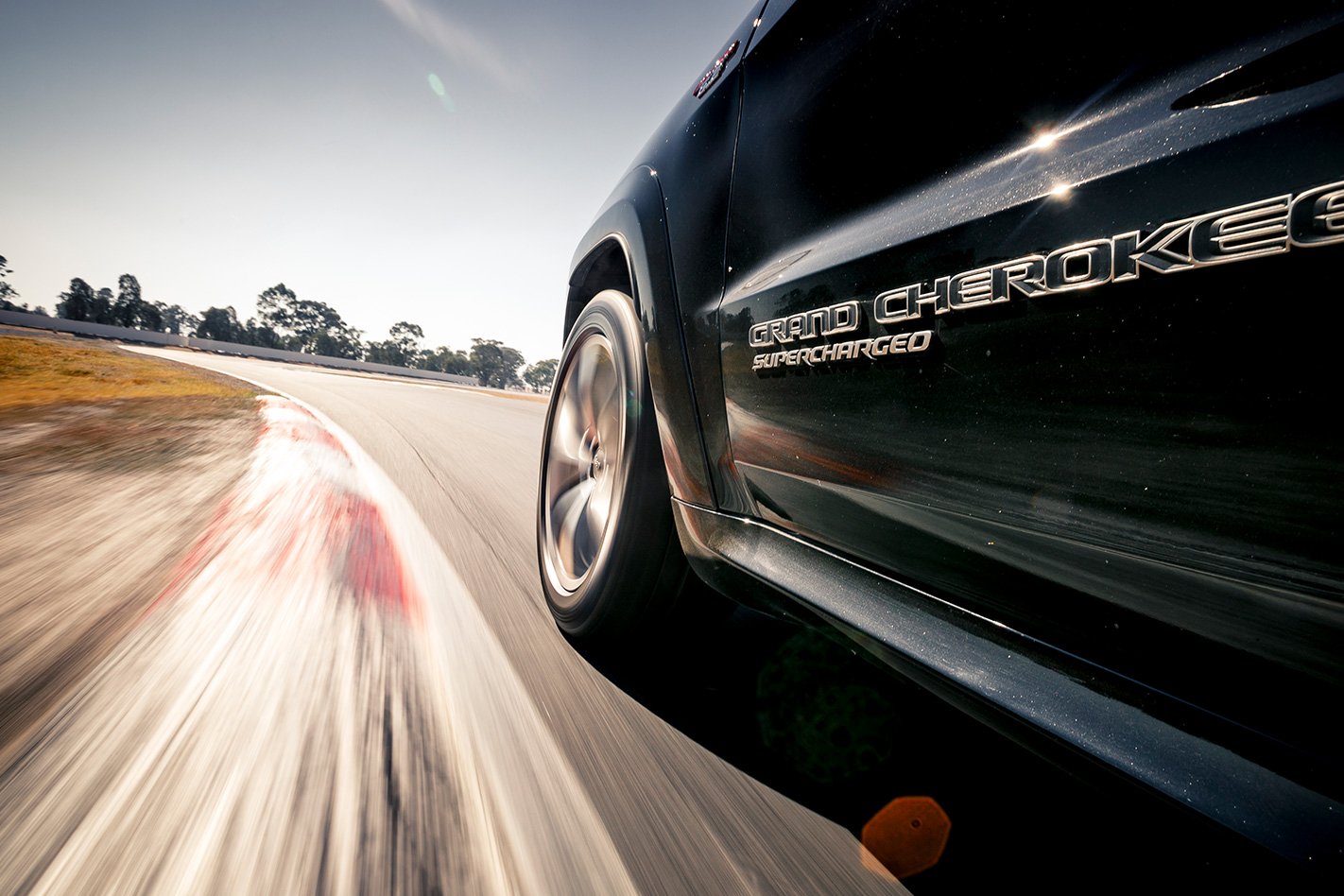
Spend a little more time with the Trackhawk and you begin to appreciate the work that’s gone into it. There’s a deftness to its modes, controls and calibration decisions that’s anything but heavy-handed. On road, it’s surprisingly civilised, the vast torque at little more than tickover allowing cross-country speed limit progress with never anything more than 2000rpm on the clock.
The adaptive Bilstein dampers also do a reasonable job of making up for the lack of sidewall in the 45 series Pirelli P-Zero rubber, only jolting in the sharpest potholes. Switch it into Sport and it’s a well-judged setting for Australian country roads, offering respectable body control, accurate steering that weights up well mid-corner and throttle mapping that’s feisty but never neurotic. It covers ground easily, and while its overtaking ability is absolutely imperious, it’s sobering to think that a couple of seconds of flat-chat throttle to clear traffic can see some licence-losing digits flash up on the dash.
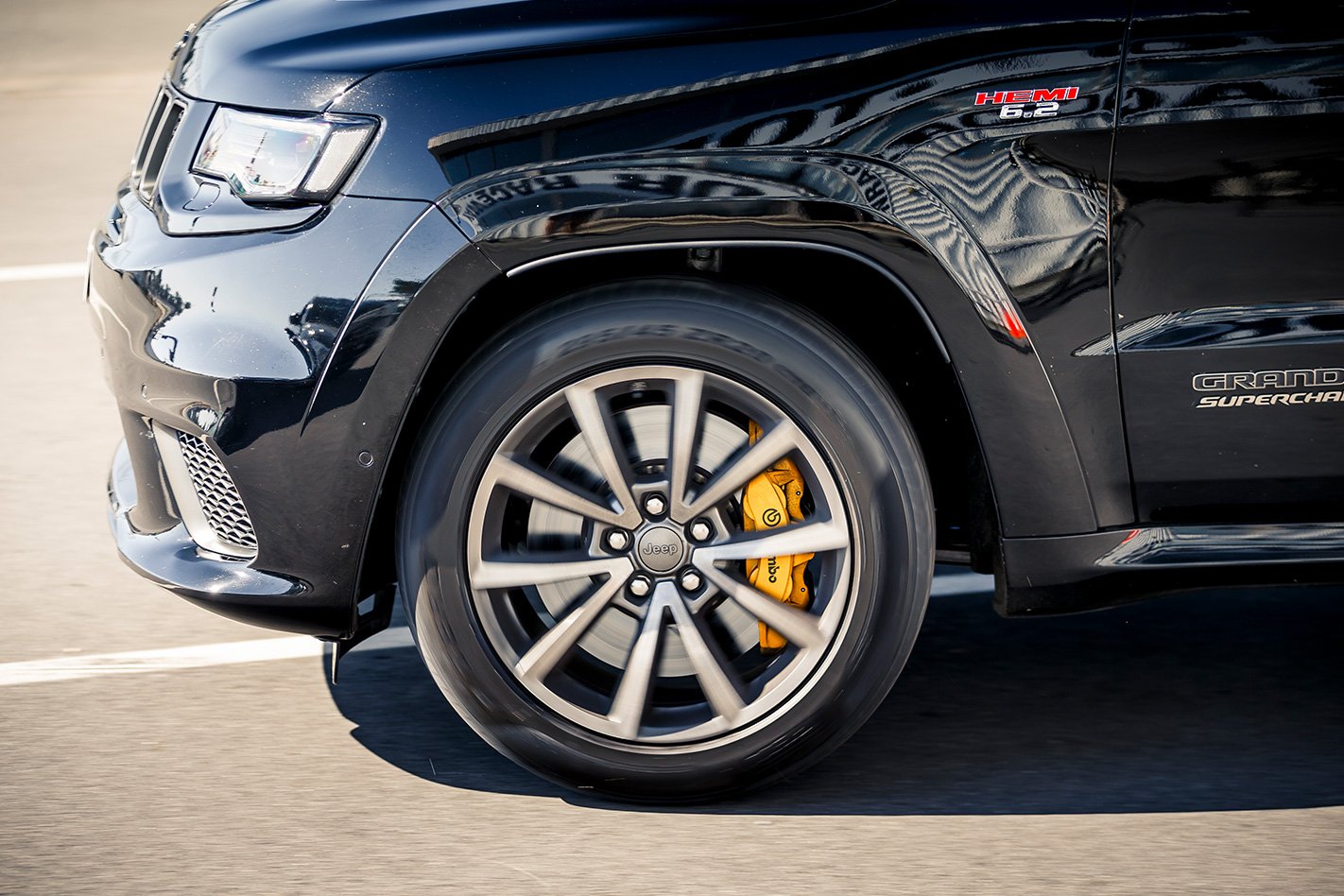
I’d somehow got this far never having driven Winton before, and doing it in a vehicle that has far more engine than brakes is probably as effective a recipe for caution as any. The Jeep’s 400mm six-pot Brembos up front and 380mm four-piston items at the back look the part, but it’s easy to underestimate the sheer kinetic energy the Trackhawk exerts.
The brakes aren’t underspecified per se, but I can see a few Trackhawk owners sledging into tyre walls because they haven’t accurately judged the huge braking distances required to pull the thing up. Switch into Track mode and the torque is split 30:70 front to rear, the suspension switches into its firmest setting, and the eight-speed Torqueflite auto bangs home gearchanges in 160ms, some 68 percent quicker than default. It’s not quite Lambo Corsa savage, but the abrupt blap on upshift gives a noticeable shunt in the back.
The stability control also eases a little but it never truly switches off and you’ll feel it working in concert with the rear e-diff on corner exit, making a faintly scratchy, graunching sounds as it attempts to keep you dirty side down.
It does a good job of it too. While a little throttle adjustability is usually welcome, the consequences of a three-figure tank-slapper in a high-riding vehicle don’t bear thinking about, so it’s a wise call on Jeep’s part. Lift the throttle and re-engage hard mid corner and it’ll let you have a degree or two of yaw before it pulls itself straight, but the electronics do a good job of quelling understeer and boosting confidence.
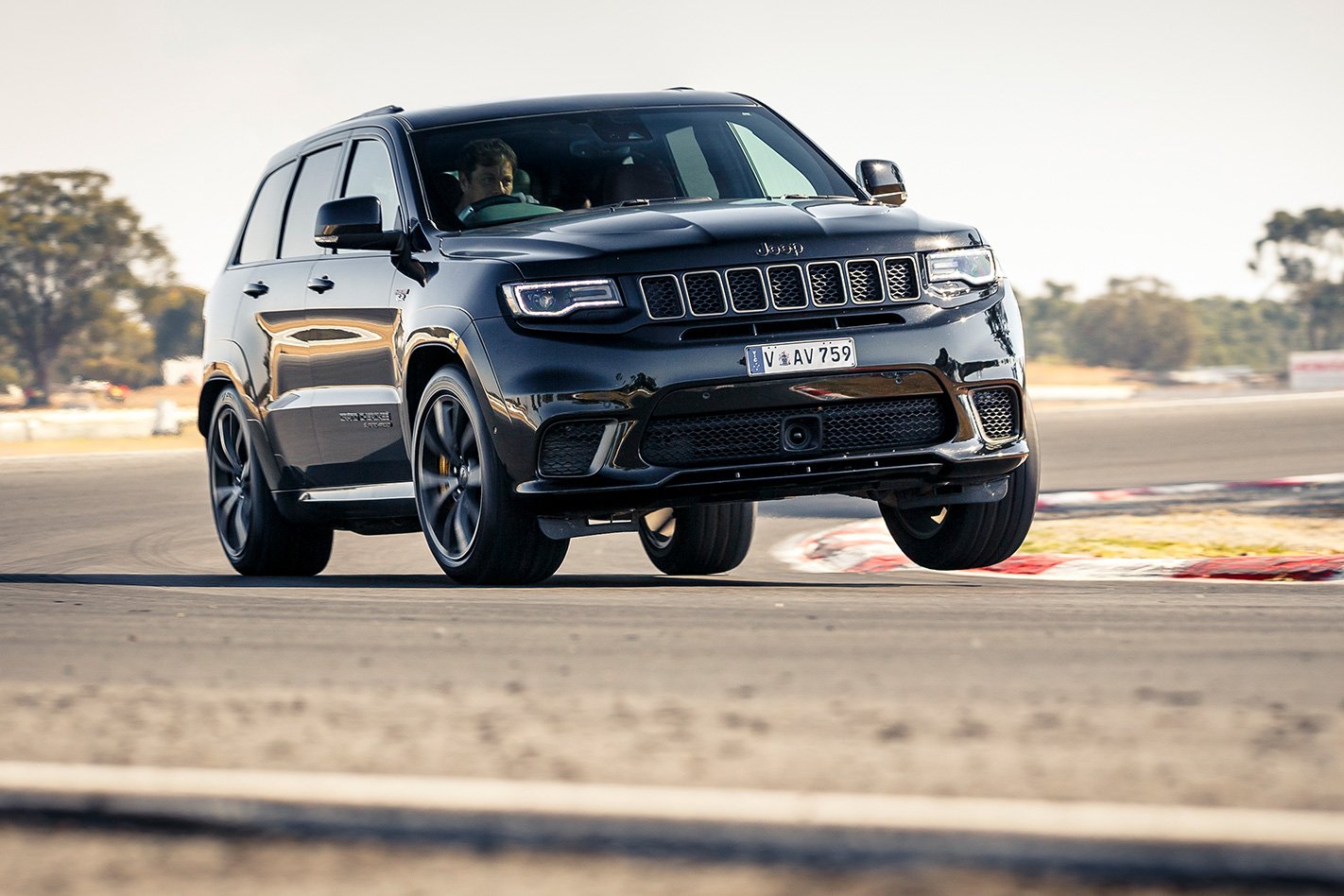
Confidence is something you’re going to need. Wielding the Trackhawk in anger feels like that moment Tony Stark dons the Iron Man suit: big power that’s not always easily controlled. As with virtually every other element of driving the Trackhawk quickly, fast cornering is an exercise in weight management. You need a moment or two to let the masses settle, to ease the big Jeep into a corner with a sympathetic flow.
The supercharger and ancillaries put another 100kg into the nose and you’ll feel that should you pitch in clumsily. The Trackhawk does lean, but not alarmingly, and a little lean is reassuring in assessing just how much the contact patches have to give. In extremis, the Trackhawk will lift an inside front wheel through a corner and it’s possible to set it into a slight porpoising motion post-apex with a big clogful of Newton metres, but most of the time it just grips and goes.
It does that a good deal more effectively than the Charger and Challenger Hellcat models from which it sources its lump, thanks to the traction of the Quadra-Trac all-wheel drive. While the Dodges will cremate their rear boots with so much as a sniff of extraneous throttle, the Trackhawk’s launch control will produce easily repeatable 3.7-second sprints to 100km/h.
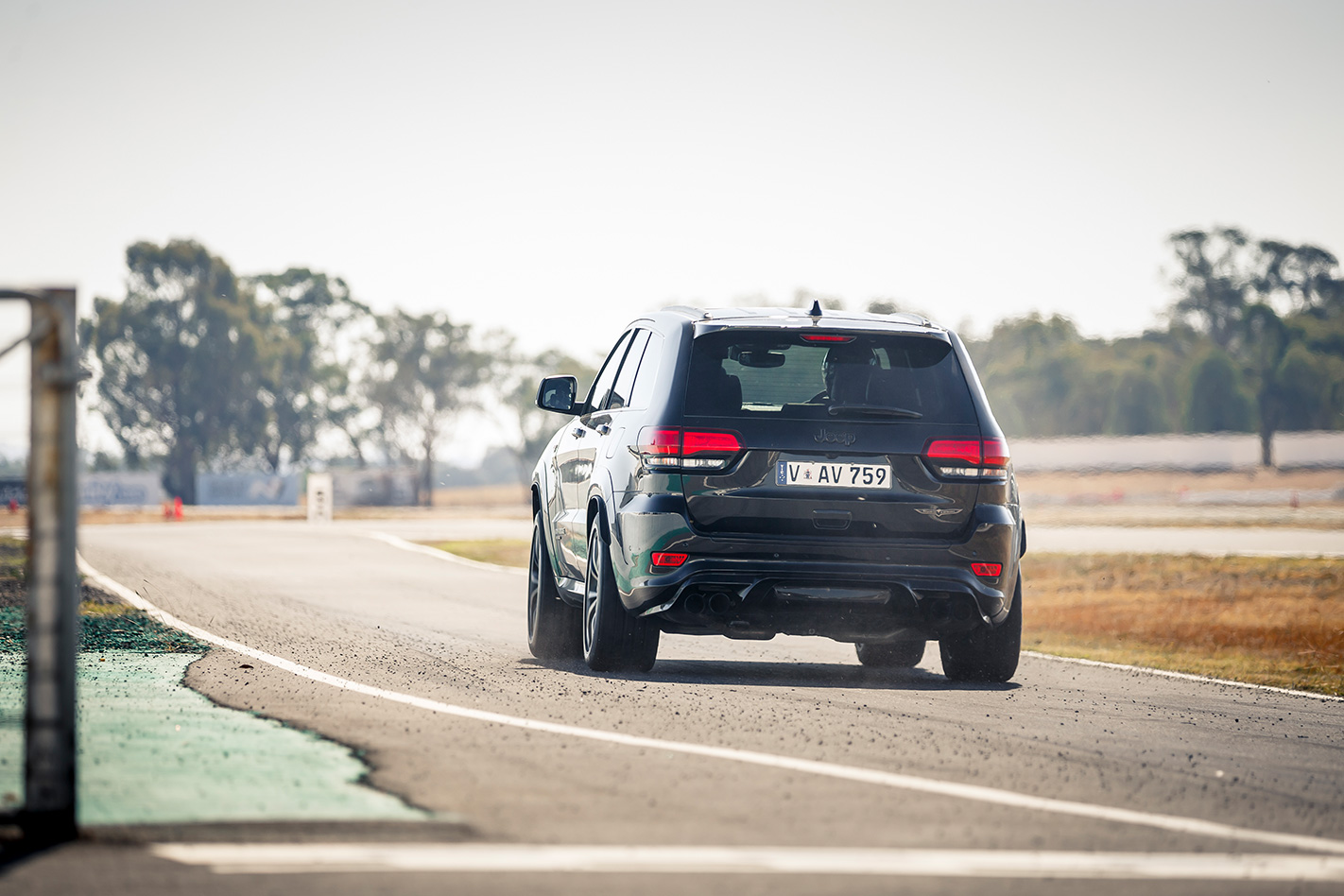
The launch procedure is just a simple button press and then a hard application of brake, the centre screen telling you how much pressure you’re holding onto the brake pedal. Floor the throttle, wait a moment and then sidestep the brake and the Trackhawk leaps from its haunches as if it’s been rammed up the chuff by The Ghan and doesn’t let up. It feels a good deal more bulletproof than doing the same thing in a car with a dual-clutch.
The Hemi V8 has been engineered for durability too. You’ll probably recall that the stock Grand Cherokee engine is a 6.4-litre unit. The Trackhawk’s smaller swept capacity comes as a result of strengthening virtually every engine internal, starting with the block. Crankshaft, crankshaft damper, forged alloy pistons, forged conrods, piston pins, bushings, cylinder heads, sodium-cooled exhaust valves, oil pump, heat exchangers, it’s all been upgraded and that feeds from there back to the transfer case with forged steel sprockets, beefier rear axle, strengthened rear driveshaft, and higher grade half-shafts and CV joints.
Then there’s the 2380cc per revolution supercharger with a built-in bypass valve that regulates boost pressure at 11.6psi. What was most impressive about the engine was its capacity to self-regulate temperature on a hot day, bringing oil temperature up to 120 degrees Celsius under hard use and settling back to a consistent 104 in pit lane, even when idling with air con switched on.
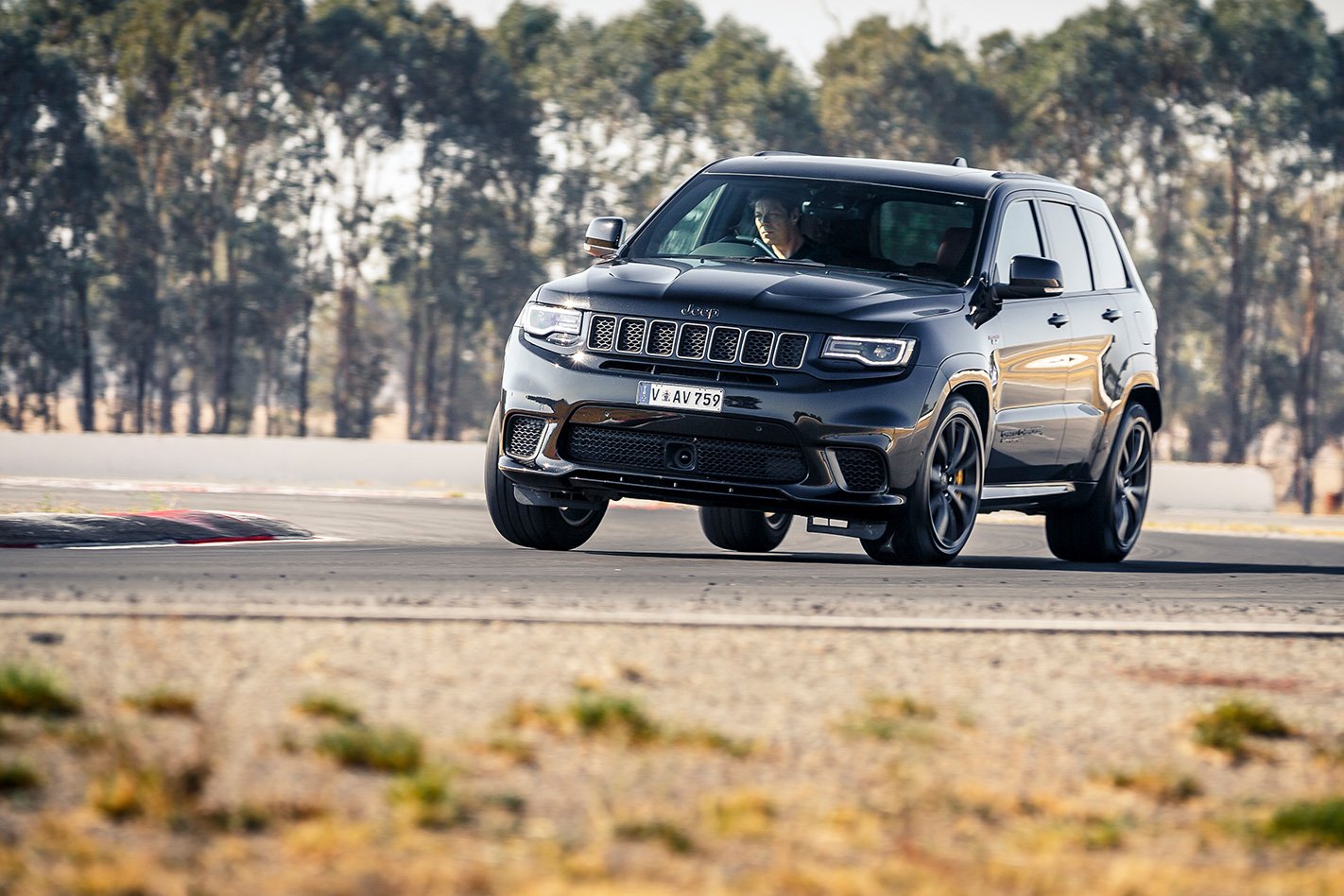
The 295/45ZR20 P Zeros were being run at 42psi front and 45psi rear and, contrary to expectations, didn’t demolish their shoulders after a series of hot laps. In fact they held up amazingly well given the physics they were asked to contend with. Push hard and they’ll start howling like a coyote with toothache, but that’s usually drowned out by the astonishing sound effects inside the vehicle.
From idle to around 5000rpm, the V8 is largely shouted down by the supercharger’s keening, but between there and the 6200rpm redline, there’s a properly uncouth hammering from the V8 that’s utterly addictive and massively loud. There’s nothing subtle about it, but it sounds breathtaking fully wrung out; more like a piston-engined WWII fighter, maybe a non-turbo Allison with short stacks.
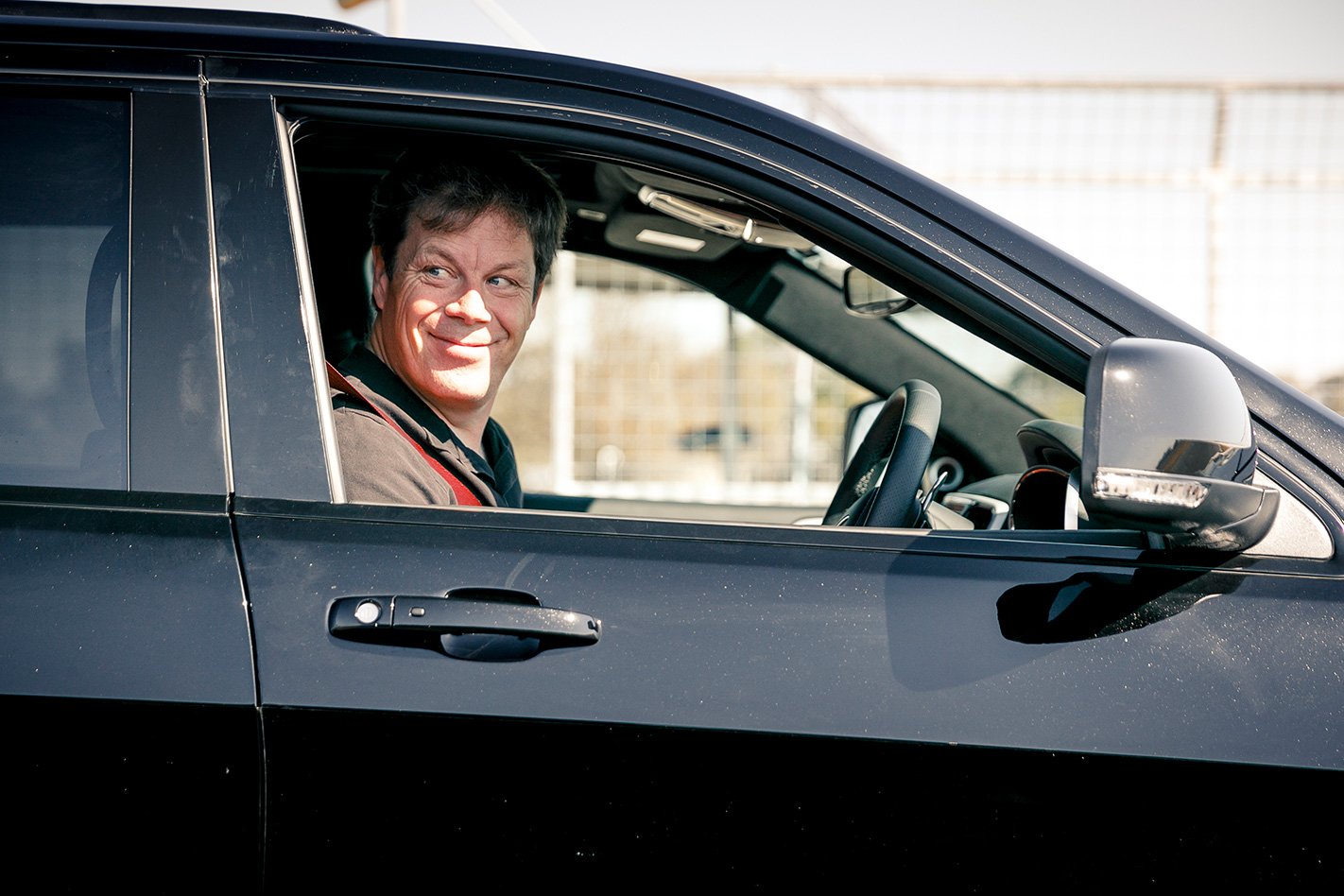
Having completed photography duties on track, it was time to pitch the Trackhawk into the dirt on Winton’s rallycross circuit. During the recce, the sequence of sandy corners looked entirely innocuous, but they present a huge challenge to a vehicle like this, namely that it’ll repeatedly come out of the loose stuff with a big yaw angle onto much grippier tarmac. Sure enough, tipping the Jeep into the dust at speed saw it pitch a long way sideways, the stability control at times cutting engine revs when you’re trying to prolong and hold the slide before penduluming back the other way.
As it swings back onto the scabby bitumen of the infield straight, there’s a brief grab before the whole thing shimmies its way straight. Get too greedy with the throttle and you need to be very mindful of where your front boots are pointing, but there is a degree of throttle adjustability on the loose surface.
We run a few passes for the stills and video guys, the speeds getting ever more ambitious. I’m trying to imagine quite how much fun this would be out in the Red Centre. Maybe not too far out, because you need a fairly tight umbilical to a fuel station, such is the Trackhawk’s prodigious thirst. During our day at Winton, we calculated that the Jeep slugged back a tankful of 83 litres of 98RON for 167 kilometres travelled, or 49.7L/100km if you prefer. This may well be a single-day record for 65 years of Wheels road-testing.
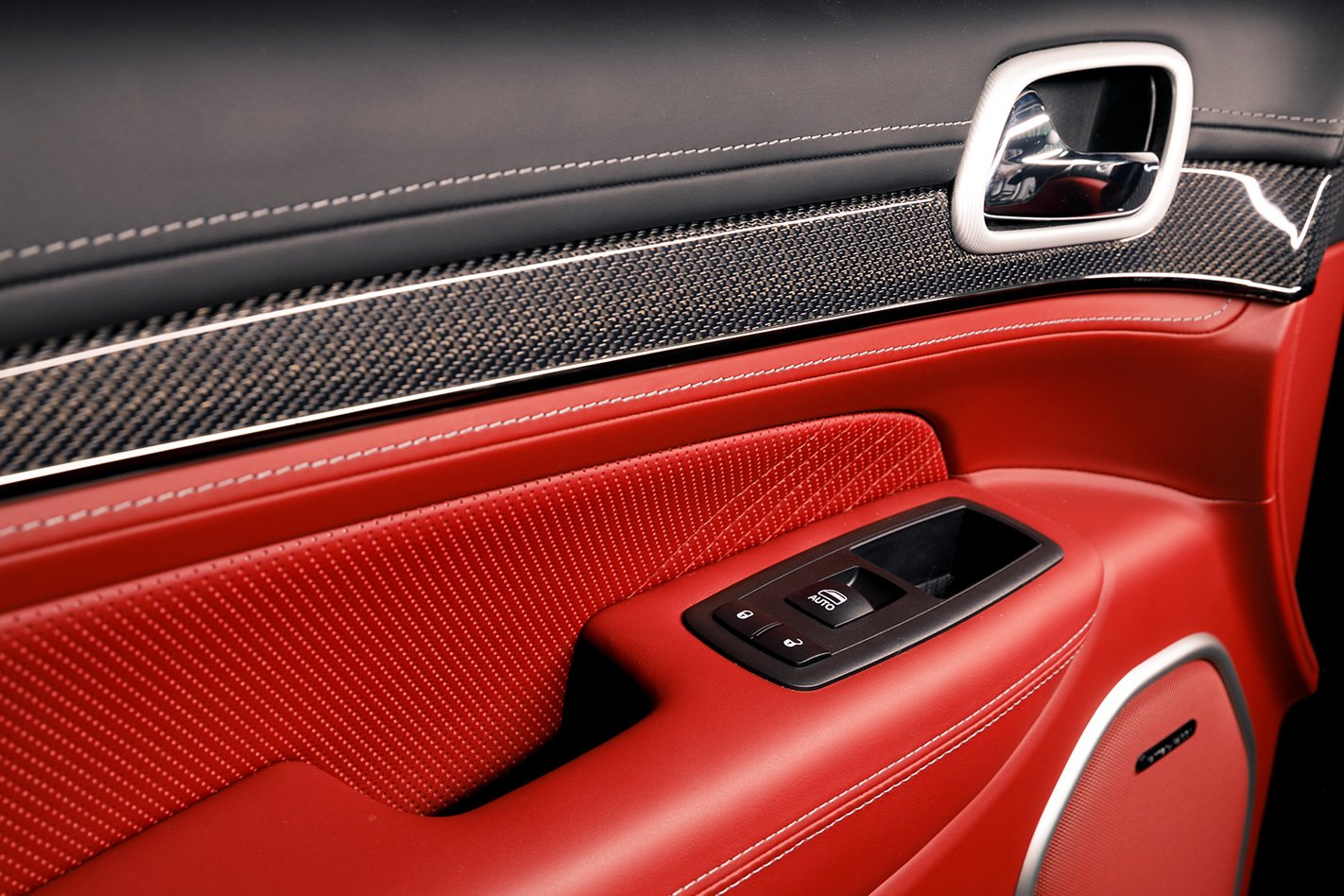
The schlep down the Hume to Melbourne gave us the opportunity to tinker with the Trackhawk’s standard fit stereo system. We don’t normally give audio systems too much attention, but the 845-watt, 19-speaker Harman Kardon fitout is something special. Anything much over half volume sets your diaphragm in key with the bass, much like standing in front of the speaker bank at a rock concert. You end up treating the volume dial with almost the same respect as the loud pedal.
The interior’s not finished with quite the same attention to high-concept design as flagship SUVs from European manufacturers, but then the Grand Cherokee Trackhawk isn’t priced like them. It’s more powerful than any of its rivals, yet it retails at $134,900, or around half the price of an entry-level Porsche Cayenne Turbo. To put it another way, it has almost double the power of a similarly priced 270kW Mercedes-AMG GLE 43. Therefore, we can cut it some slack for its mass-market switchgear.
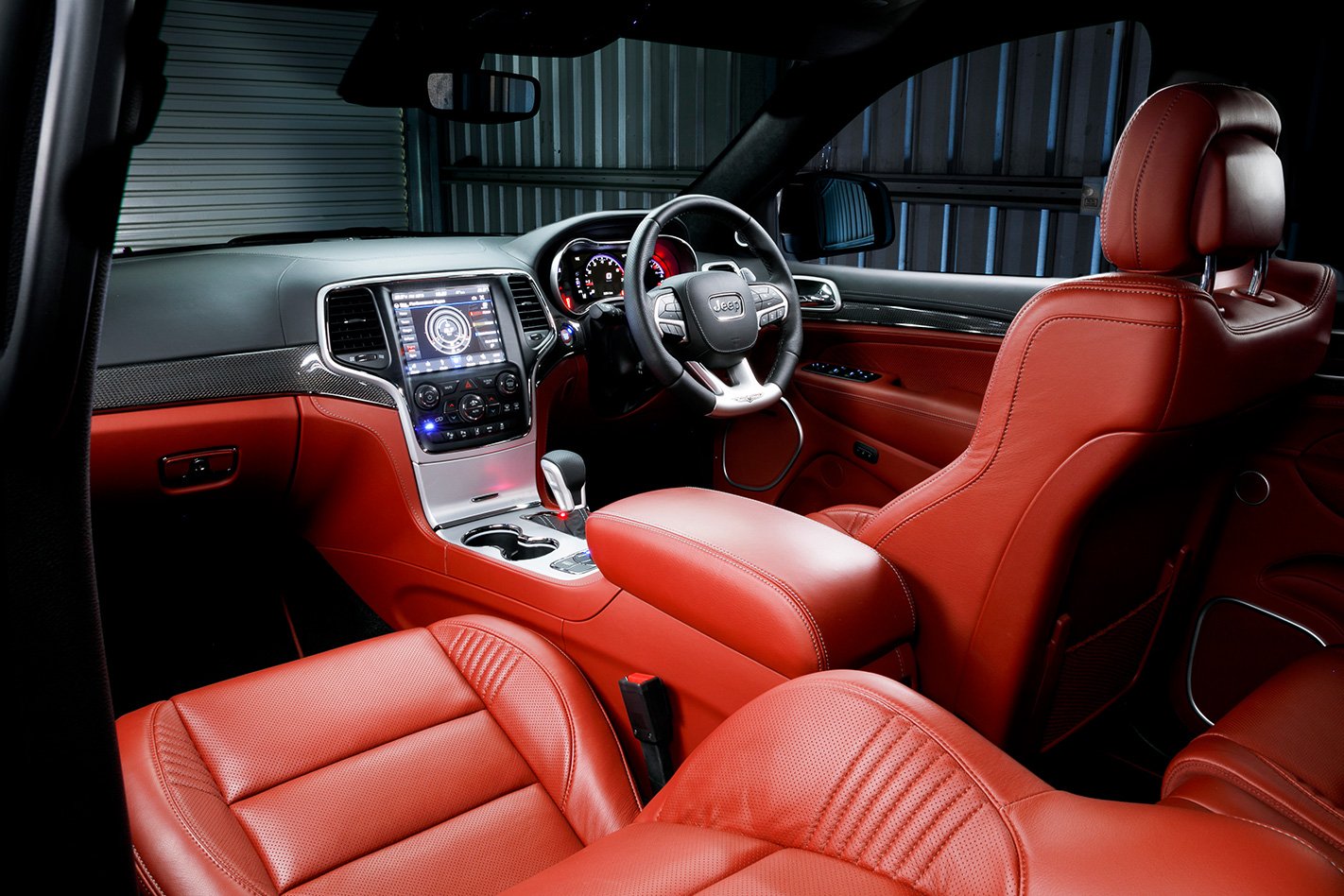
The carbonfibre-effect fillets on the dash might grate a little considering the vehicle’s weight but the cabin ergonomics are sound. The main touch points are well finished and there’s evidence of real consideration to everyday use, such as the right-way-’round gear shifter, the lovely fingertip stereo control rocker switches on the back of the steering wheel, the intuitive infotainment, the functional adaptive cruise and convenience features like a heated steering wheel and heated and cooled front seats.
The double-pane glass sunroof doesn’t impinge on headroom, because the electric seats drop far enough to allow for a suitably dynamic hip height. There are some clangers though, such as the illegible 320km/h analogue speedometer, the hideous foot-operated parking brake that denies you a left foot rest and the riot of clashing fonts when you mirror your smartphone into the skin of the main screen. These are minor grumbles, however. The Grand Cherokee Trackhawk is an absolute triumph both in terms of value for money and in its fundamental effectiveness.
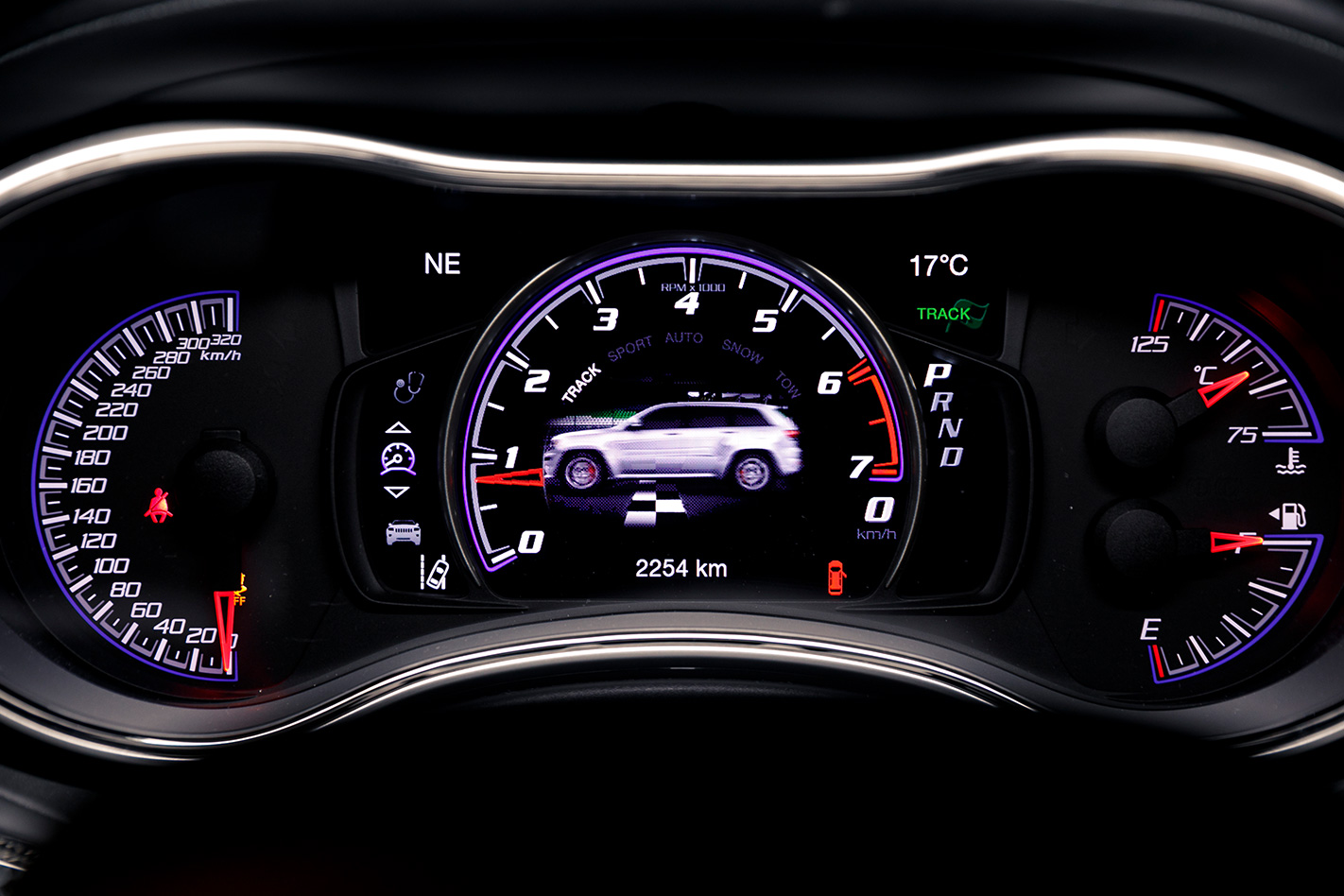
Can you think of any other class of car where the fastest and most powerful offering in the segment is so relatively inexpensive? Granted, $135K isn’t chicken feed, but having significantly more substance than cars costing twice as much is one heck of a compelling proposition.
But could you bring yourself to buy a car this brash, this wasteful, this excessive? That could well be the sticking point and all those extra dollars spent on a BMW, a Range Rover, a Mercedes-AMG or a Porsche super-SUV buys you a measure of refinement and presentability absent from the Trackhawk. I don’t care too much for that.
The Trackhawk ladles on an element of fun that seems to have been excised from its overpolished rivals. There must have been hundreds of points in the product planning process where Jeep could have canned the project as too OTT, but it went ahead. I love the fact that a vehicle like this exists: a riotous, hedonistic assault on the senses.
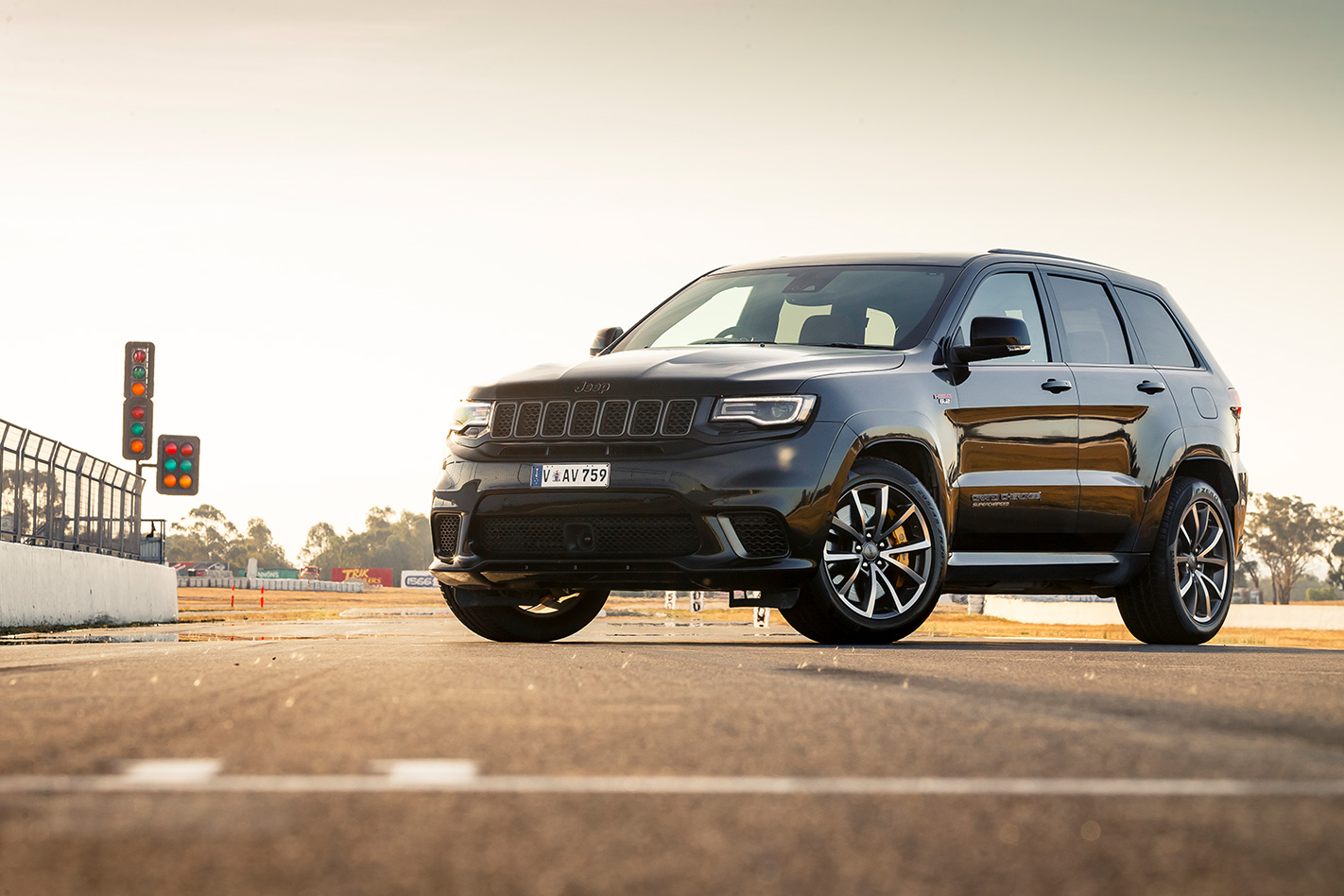
All too often we drive cars that aren’t as much fun as they promise. We really want to like them and yet we don’t. Then there’s Jeep’s Grand Cherokee Trackhawk, a vehicle you’d love to hate but can’t help being utterly charmed by. It’s also hard to overlook the satisfaction of sitting next to high-end sports cars at the lights safe in the knowledge that theirs don’t go to 522.


